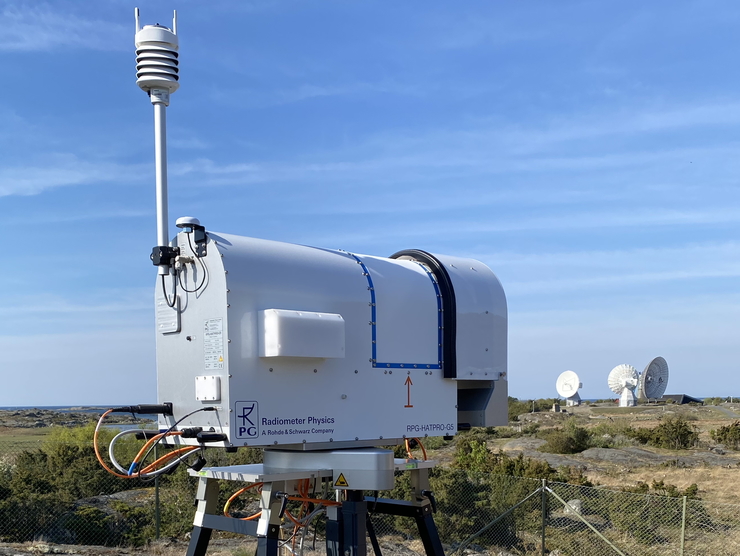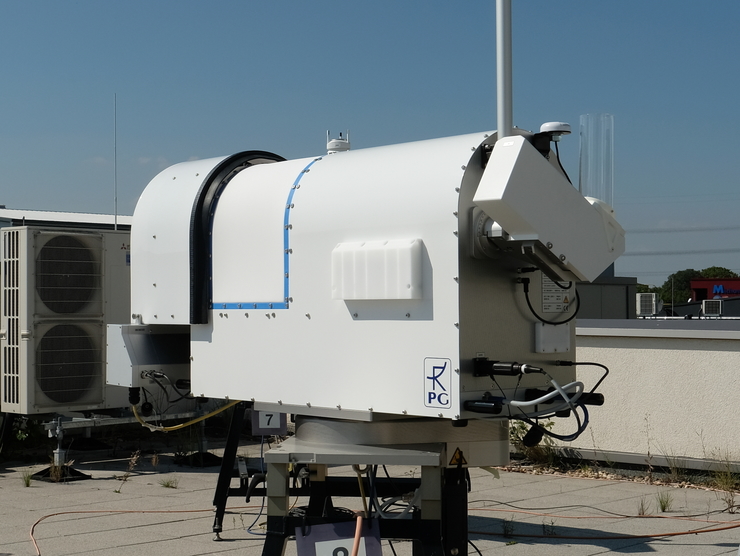Humidity And Temperature PROfilers
 |  |
RPG's profiling radiometers are mainly used to derive vertical profiles of atmospheric temperature and humidity (RPG-HATPRO). The infrared radiometer extension allows to cloud base height and ice cloud detection. The radiometer series covers high-resolution temperature profiling of the boundary layer and low-humidity applications. All models of the series provide accurate total amounts of atmospheric water vapor and cloud liquid cloud. RPG radiometers are stand-alone systems for automated weather-station use under nearly all environmental conditions. A variety of retrieval algorithms (custom designed and global standard algorithms) can be selected.
Applications:
Meteorological observations, Numerical Weather Prediction (NWP), forecasting, now-casting, climate monitoring, aviation meteorology, astronomy, geodesy.
Frequencies:
Two bands, 22-31 GHz (7-channel filter-bank humidity profiler and LWP radiometer) and 51-58 GHz (7-channel filter-bank temperature profiler)
Retrieved data types:
- vertical profiles of atmospheric temperature
- vertical profile of atmospheric humidity (relative and absolute humidity)
- Liquid Water Path (LWP)
- Integrated Water Vapor (IWV)
- wet delay
- dry delay
- stability indices
This system is very similar to the RPG-LWP liquid water path (two channel) radiometer. Only the receiver systems vary, housing and additional sensors are basically the same.
Models:
Different model types of profiling radiometers are available.
| Model | Frequencies | Applications |
|---|---|---|
| HATPRO | 22.24 – 31.4 GHz, 51.0 – 58.0 GHz | Humidity + temperature profiles (high precision in boundary layer), clouds, IWV, LWP, stability |
| LHATPRO | 51.0 – 58.0 GHz, 183.31 GHz (6 DSB-channels to ±7.5 GHz) | Like HATPRO, but for Low-humidity (high altitudes, cold environments, PWV < 3 mm) |
| TEMPRO | 51.0 – 58.0 GHz | Temperature profiles, Boundary layer temperature profiling |
| HUMPRO | 22.24 – 31.4 GHz | Humidity profiles, clouds, IWV, LWP |
| LHUMPRO | 183.31 GHz (6 DSB-channels up to ±7.5 GHz) | Low-Humidity high-precision profiles (clouds: limited accuracy) |
RPG_Profiling Radiometer_2023.pdf
RPG_MWR_BLM_AN 2022.pdf
RPG_G5_LN_AN 2022.pdf
RPG_MWR_STD_Installation_Manual_2023.pdf
RPG_MWR_STD_Software_Manual G5_2023.pdf
